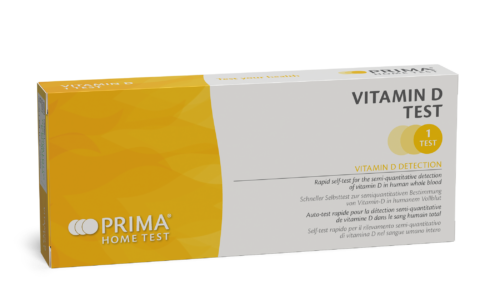
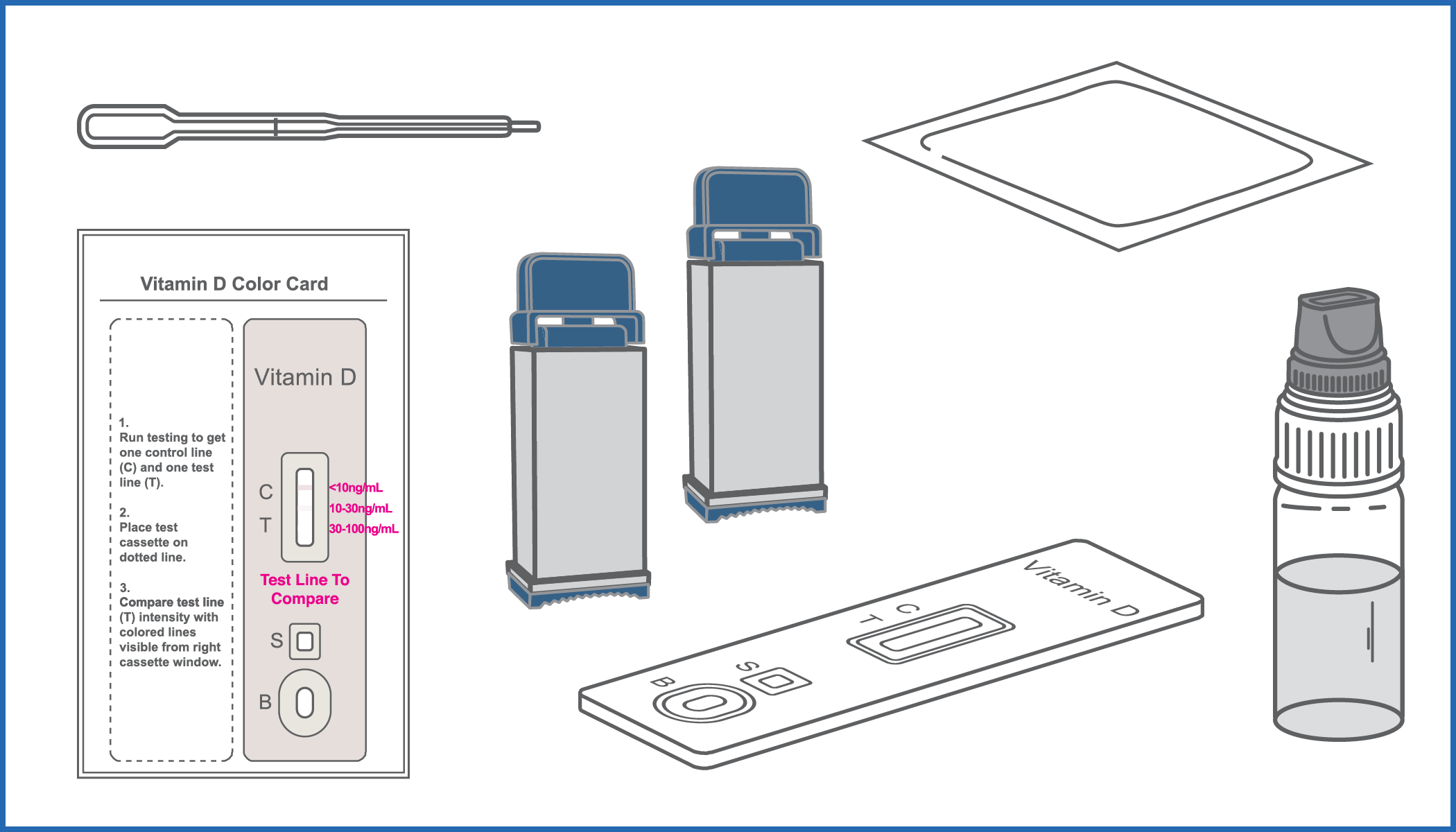
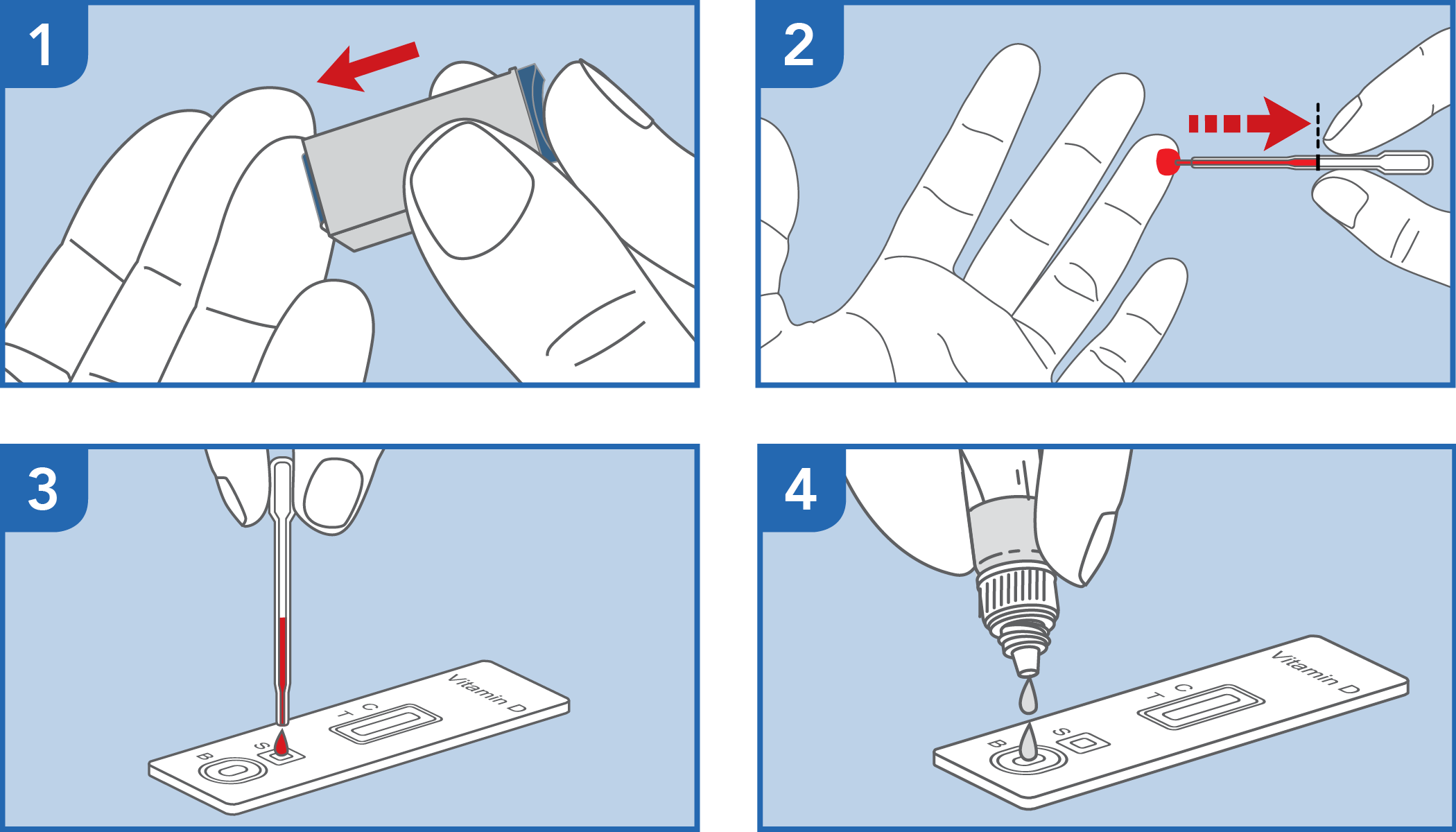
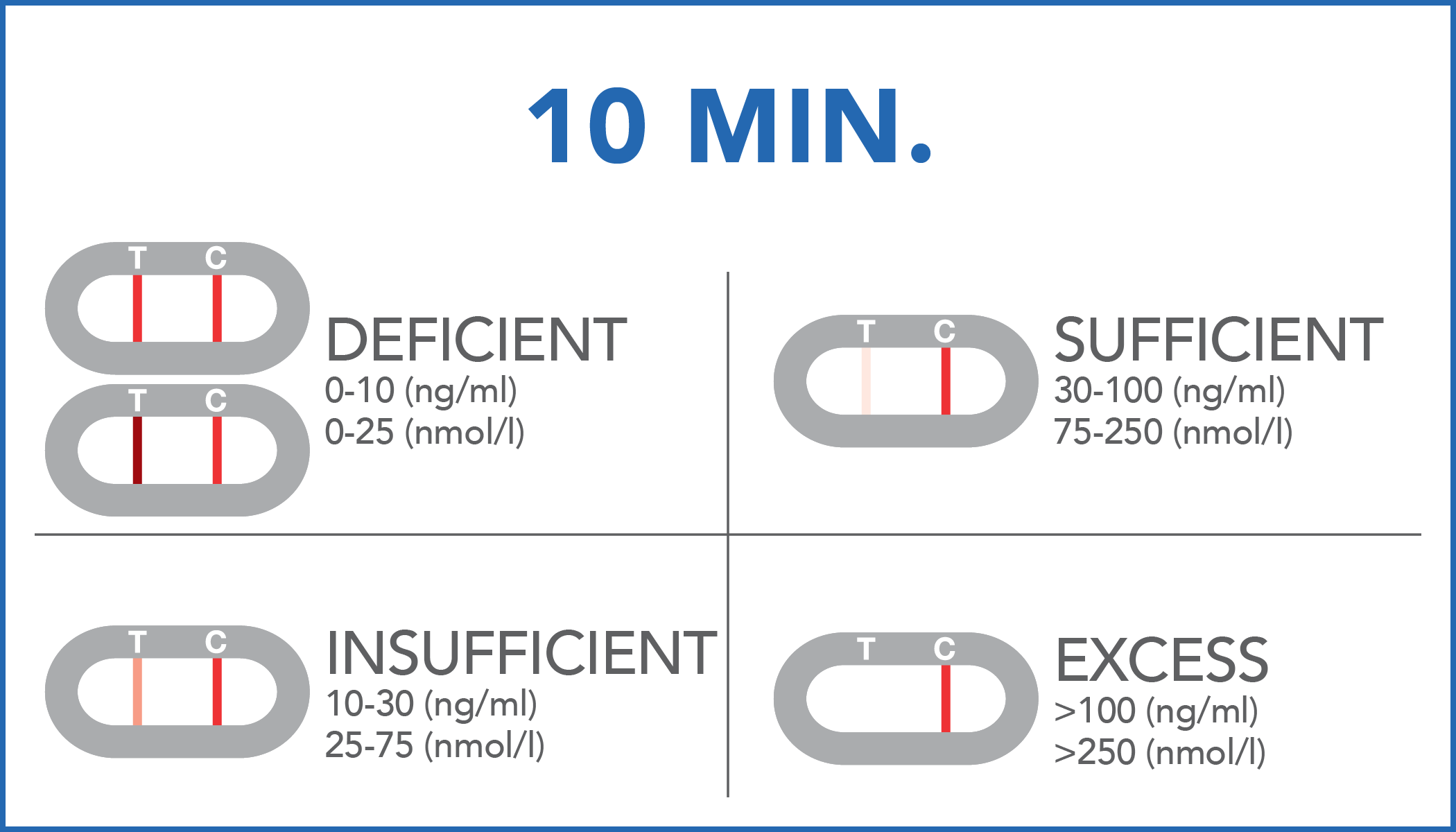
Rapid self-test for the semi-quantitative detection of vitamin D in human whole blood

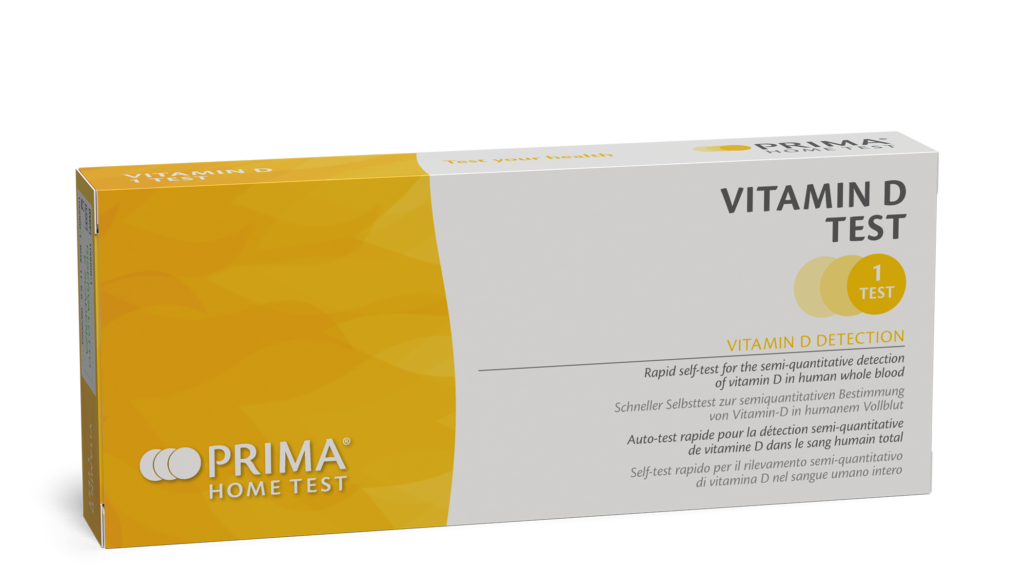
Vitamin D belongs to a group of fat-soluble secosteroids responsible for increasing the intestinal absorption of calcium, iron, magnesium, phosphate and zinc. Blood concentration of vitamin D is considered the best indicator of the level of vitamin D in the body.
read moreNowadays, vitamin D deficiency is recognized as a worldwide epidemic. This has been linked to several severe diseases: osteoporosis, osteomalacia, cardiovascular diseases, complications in pregnancy, diabetes, depression, autoimmune diseases, flu, infectious diseases and more. For this reason, the detection of vitamin D levels is now considered as a “medically necessary screening test”.
VITAMIN D TEST is intended for people who are commonly at risk of vitamin D deficiency, such as those who get tired and weary easily, have poor sun exposure, have a limited oral intake or an impaired intestinal absorption.
read moreMaintaining sufficiently high levels of vitamin D is necessary to improve bone health, as well as the overall health and well-being of the body. The main symptoms of vitamin D deficiency include: fatigue, tiredness, muscle weakness, bone and/or joint pain.
VITAMIN D TEST is an immunoassay based on the principle of competitive protein binding, capable of showing an excessive, sufficient, insufficient or deficient level of vitamin D in blood.
| Measuring range | 10-100 ng/mL |
| Accuracy | 94.4% |



| Excessive (> 100 ng/mL) | no clear lines appear at the test line region (T). You need to consult your doctor. |
| Sufficient (30-100 ng/mL) | the intensity of the test line (T) is equal to or less than that of the 30 ng/mL displayed on the color card. |
| Insufficient (30-10 ng/mL) | the intensity of the test line (T) is darker than the 30 ng/mL line and lighter than the 10 ng/mL line displayed on the color card. |
| Deficit (0-10 ng/mL) | the intensity of the test line (T) is equal to or darker than the 10 ng/mL line displayed on the color card. You need to consult your doctor. |
1. Grant WB, Holick MF (June 2005). Benefits and requirements of vitamin D for optimal health: a review. Alternative Medicine Review.10 (2): 94–111.
2. Moyad MA. Vitamin D: a rapid review. DermatolNurs. 2009, 21:25-30
3. Holick MF (March 2006). “High prevalence of vitamin D inadequacy and implications for health”. Mayo Clinic Proceedings. 81 (3): 353–73.
The test has been carried out correctly when the instructions for use are followed. It includes the reading time and the interpretation of the results shown at the "RESULTS INTERPRETATION" section of the instructions for use.
A colored line will appear at the control region (C) on the test device, showing that the test performed correctly. The absence of the colored line suggests to repeat the test with a new device and a new sample.
The color and intensity of the lines do not affect the interpretation of the result. The test has to be considered positive regardless of the color intensity of the test line (T).
Check product availability with the local representative in your country
